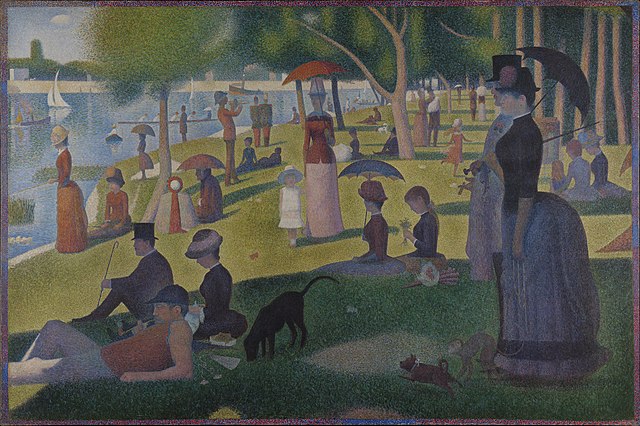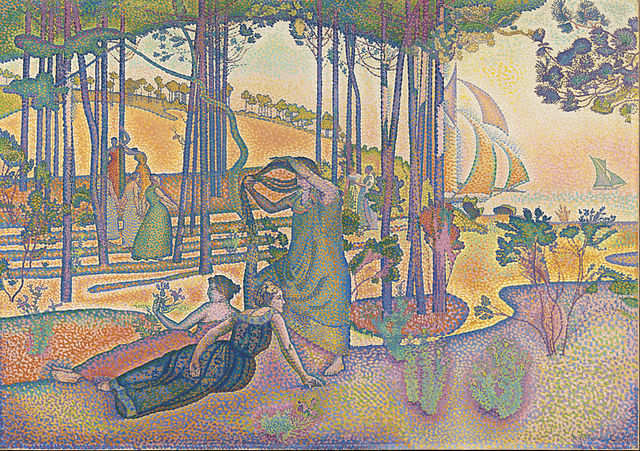Paul Victor Jules Signac was a French Neo-Impressionist painter who, with Georges Seurat, helped develop the artistic technique Pointillism.
Paul Signac with his palette, c. 1883
Portrait of Félix Fénéon, by Paul Signac in 1890, oil on canvas, 73.5 × 92.5 cm (28.9 × 36.4 in), Museum of Modern Art, New York
Portrait of Paul Signac by Georges Seurat in 1890, conté crayon, private collection
Portrait of his wife, Berthe, painted at Saint-Tropez by Paul Signac, 1893, Femme à l'ombrelle (Woman with Umbrella), oil on canvas, 81 x 65 cm, Musée d'Orsay, Paris
Neo-Impressionism is a term coined by French art critic Félix Fénéon in 1886 to describe an art movement founded by Georges Seurat. Seurat's most renowned masterpiece, A Sunday Afternoon on the Island of La Grande Jatte, marked the beginning of this movement when it first made its appearance at an exhibition of the Société des Artistes Indépendants in Paris. Around this time, the peak of France's modern era emerged and many painters were in search of new methods. Followers of Neo-Impressionism, in particular, were drawn to modern urban scenes as well as landscapes and seashores. Science-based interpretation of lines and colors influenced Neo-Impressionists' characterization of their own contemporary art. The Pointillist and Divisionist techniques are often mentioned in this context, because they were the dominant techniques in the beginning of the Neo-Impressionist movement.
Neo-Impressionism
Paul Signac, 1890, Portrait of Félix Fénéon (in front of an enamel of a rhythmic background of measures and angles, shades and colors), oil on canvas, 73.7 × 92.5 cm (28.9 × 36.4 in.), Museum of Modern Art, New York
Henri-Edmond Cross, The Evening Air (l'Air du soir), c. 1893, oil on canvas, 116 × 164 cm, Musée d'Orsay, Paris
Georges Seurat, Le Cirque, 1891, oil on canvas, 185 x 152 cm, Musée d'Orsay, Paris







